The Mass Transit Railway in Hong Kong has more trains than just the EMU fleet that transports the city of 6 million people…
They also have a collection of small battery-electric and diesel-hydraulic locomotives to use on maintenance trains, both in tunnels and on viaducts. (For the purposes of this post I am ignoring the diesel locomotive fleet the MTR acquired in 2007 when they merged with the KCR – I have covered that previously.)
Initially I couldn’t find any information about these locomotives: from looking at them the diesel and battery electric units have two axles, I assume both are powered, giving them a 0-4-0 wheel arrangement. From examining my photos I could tell the battery-electric locomotives were built by Brush Traction, and the diesels were built by Schoma (a German firm), but then I hit a dead end.
It wasn’t until I stumbled upon a website called ‘Heavy Iron Station’ that I found a page with more details – you can visit it here.
Schoma diesel hydraulics
The Schoma diesel fleet were the first MTR locomotives: designed CFL-200 DCL-R and fitted with a Caterpillar Model 3306T engine, capable of hauling 100 tonnes at a top speed of 45 km/h, I presume they assisted in the construction of the network, being imported as follows:
- Phase 1: nine units number L11 to L19 and imported in 1977
- Phase 2: nine units numbered L20 to 28 and imported in 1979
- Phase 3: eight units numbered L31 to L38 and imported 1983
I only saw phase 3 units during my visit, with L33, L35, L36, L37 and L38 at the Kowloon Bay depot. All wear a basic green livery, with a grey roof and black underframe: same as the early battery electrics. They appear to be capable of multiple unit operation, going by what I saw:
Brush Traction battery electric locomotives
Phase 1: five units numbered L51 to L55 which entered service in 1983. Capable of hauling a maximum trailing load of 109 tonnes on a 3% of gradient, I didn’t see any during my visit.
Phase 2: six units numbered L56 to L61 which entered service in 1989. They have the same performance as the phase 1 units, so I assume they are of the same general design. The only one I found was L59 at the Kowloon Bay depot, painted in green livery, with a grey roof and black underframe. The pantograph is located atop the cab roof, with no sign of an air conditioner.
Phase 3: twenty units numbered L62 to L82 which entered service in 1996, with most are used on the Lantau Airport Railway, but some on the Urban Railway Lines. They are more powerful than the earlier units, being able to haul 160 tonnes. In 1999 four more units were delivered as L83-L86, followed in 2016 by L87-L88. Their design is also slightly different to phase 2 units, with the pantograph at the opposite end, and an air conditioner above the cab. During my trip I saw locomotive L68 out at Siu Ho Wan depot on Lantau Island, and L64, L69, L72 and L76 at the Kowloon Bay depot on the Kwun Tong line. All of them were painted yellow with tiger stripes at the ends.
Given that all of the battery electrics I saw were shunting around the depot with their pantograph down, I assume they can operate for extended periods from the batteries.
And the trains they haul
The locomotives are used to haul a small fleet of works trains, they have a small ultrasonic test vehicle that look like an American caboose:
There is also a variety of specialist wagons used for overhead wiring access, cable laying, rail transport, tunnel repair, and so on.
Both the locomotives and work train fleet are fitted with the same couplers as the EMU fleet, these being BSI multifunction couplers, but minus the electrical connections. Named for the manufacturer (Bergische Stahl Industrie), these couplers were popular in the United Kingdom during the late 1970s and early 1980s: about the time the MTR network and rollingstock was being built with British influence.
Actually finding the locomotives outside the depot to be impossible: I assume works trains only run outside the normal operating hours of the railway (eg: the middle of the night), and the stations get locked up tight after the last train. I could only a find a handful of depot photos at this website (in Chinese).
And an update
Between 2012 and 2014 the MTR refurbished a number of Schoma diesel locomotives for use on the West Island Line, Kwun Tong Line Extension and South Island Line projects.
The locomotive numbers known to be refurbished include L12, L13, L14, L15, L22, L24, and L26.

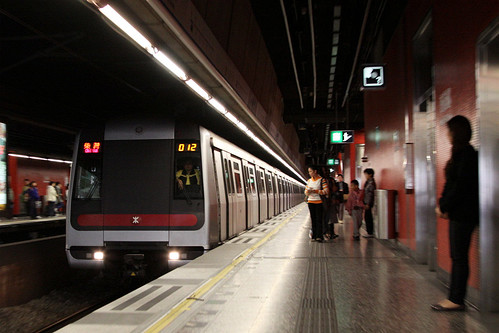
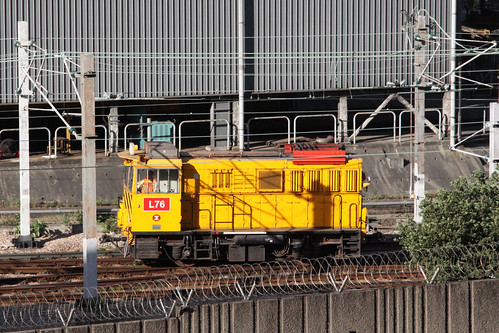
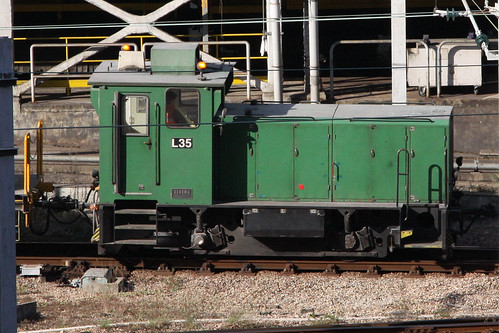
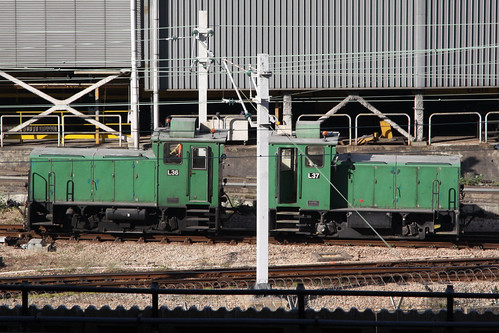
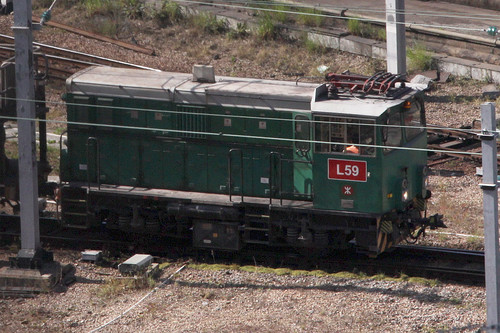
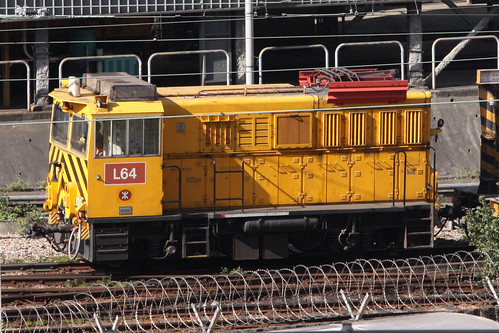

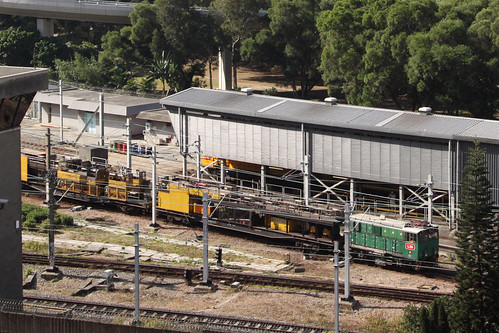


Hi Marcus
Excellent coverage on your Hong Kong connections.
The subject of Industrial diesel and electric locomotives in the Asian region is a topic that is seldom written about, bravo for your observations.
Could you please get in touch with me? I have more info about Schöma locomotives and about EXIF metadata tags.
Thank you
Philip G Graham
Pingback: Underground Iron – Building the Hong Kong MTR | Checkerboard Hill
nice blog, I live(and born) in hong kong.
i love mtr,considering its the fastest transport. i would like to learn more about mtr, many thanks.
However, i would like to point out that in the last paragraph, its cantonese, not chinese.
Glad you like the site, and thanks for the correction.
I knew the difference between the traditional Chinese characters used in Hong Kong and simplified characters on the Mainland, but didn’t realise that ‘Written Cantonese’ was something else yet again:
https://en.wikipedia.org/wiki/Written_Cantonese
Pingback: Scale model of a MTR works train - Checkerboard Hill
Hi
I used to look after the MTR works train fleet in the early 1980’s – yes the Schomas can operate in multiple – the works train wagons are also equipped with train lines so a standard train on the main line has a loco at each end working in multiple allowing a loco to lead (necessary for the ATP) . They were limited to 40 kph rather than the 80 kph of the passenger trains and have full ATP . In my day there was a regular scheduled material transfer train from Kowloon Bay with ran in the off peak period and carried spare bogies etc too and from the outstation depots.
There was also a fleet on the lines under construction the very first train along the island line was a lone Schoema as a dry run for the press run the next week – I was in the Cab and the Operations Manager was driving.
They were equipped with Hydraulic Transmission and Caterpillar Engines
Thanks for the extra info Malcolm!
Pingback: MTR ZER4 battery electric locomotives - Checkerboard Hill
Pingback: MTR's rolling billboard - the 'Spectacular Mobile Showcase' - Checkerboard Hill